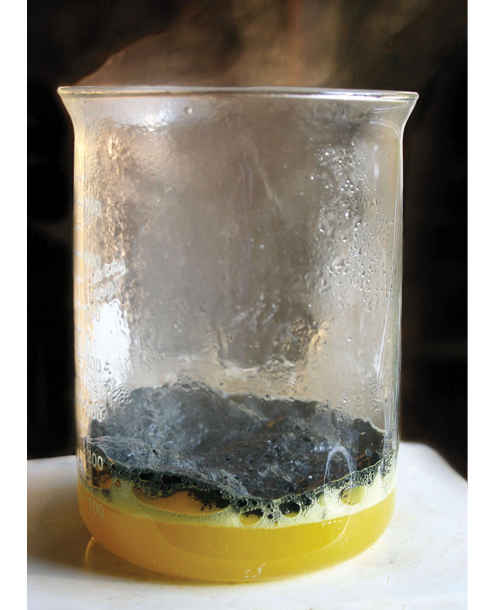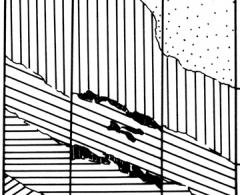
This Article From Issue
March-April 2019
Volume 107, Number 2
Page 120
NEWTON THE ALCHEMIST: Science, Enigma, and the Quest for Nature’s “Secret Fire.” William R. Newman. 537 pp. Princeton University Press, $39.95.
When a rich trove of Isaac Newton’s manuscripts was put up for sale in 1936, the full scale of the great man’s preoccupation with extrascientific topics became manifest. John Maynard Keynes, who purchased the bulk of the alchemical manuscripts, was so astounded by their content that he wrote an essay on Newton in which he labeled his protagonist “the last of the magicians”— and not “the first of the age of reason” —so persuaded was he that the alchemical manuscripts now in his possession were “wholly magical and wholly devoid of scientific value.” Subsequent scholars maneuvered within this interpretive framework imposed by Keynes. Betty Jo Teeter Dobbs, for example, remained convinced that the key to Newton’s alchemy was located in his intense heterodox religious quest. Richard Westfall considered Newton’s pursuit of alchemy and magic to be a manifestation of his heightened reaction to Cartesian rationalism—a reaction that had, paradoxically, served as the source of his theory of universal gravitation. Newton the Alchemist lays to rest such views, together with the entire interpretive scaffolding that informed them.

From Newton the Alchemist.
Chymistry is the term Newton’s contemporaries used to describe a vast spectrum of activities, ranging from the transmutation of metals to industrial chemistry and pharmacology. William Newman is a founding member of a new generation of historians of science who have taken pains to establish the extent to which chymistry was an integral part of early modern scientific culture more broadly. A large number of those who contributed to the phenomenon known as the Scientific Revolution were engaged, to a greater or lesser degree, in chymical activities. As general editor of The Chymistry of Isaac Newton (www.chymistry.org), an Indiana University website, Newman is overseeing the digitization of the entire corpus of Newton’s alchemical manuscripts, which he then subjects to rigorous textual analysis, aided by sophisticated computational techniques and careful replication of Newton’s own experiments. Such concerted effort has greatly facilitated the deciphering of Newton’s alchemical manuscripts, notes, laboratory records, and correspondence— totaling 1 million words —and the identification of the sources upon which he drew.
Newton’s interest in all things chymical began early. Having been exposed to the tradition of books of secrets and of natural magic at grammar school, he turned to alchemical works proper early in his undergraduate career at the University of Cambridge. Later he encountered the works of Robert Boyle, and the combination of his own burgeoning ideas with Boyle’s conceptualization of the analysis and resynthesis of materials laid the foundation for Newton’s discovery of the heterogeneity of white light. Boyle’s experimental methodology, as well as his matter theory, further contributed to the development of Newton’s scientific ideas. At this stage, however, Newton appears to have confined himself to a strictly textual study of alchemical works. Only in 1669 did he purchase the requisite apparatus and commence his experimenting —an activity he persisted in for the next quarter of a century and beyond.
One of the great virtues of Newman’s book is the provision of a comprehensive account of early modern alchemical writings and practices. Historians have known for quite some time that, for the most part, Newton’s alchemical manuscripts are not original compositions; they exhibit an almost compulsive habit of repeatedly copying and paraphrasing works of other alchemists. Consequently, a meticulous exposition of the source material upon which Newton drew is a prerequisite for evaluating the nature of his engagement with, and deviation from, earlier practitioners—in theory as well as in practice. Newman identifies several alchemists who were particularly influential: George Starkey, Michael Maier, Michael Sendivogius, Johann de Monte-Snyders, and Edmund Dickinson. These, and lesser figures, constituted an exclusive fraternity of adepts into whose ranks Newton demanded admission. From the start, he exhibited a “remarkable confidence” in being elected to their number, feeling sure of his superior interpretive skills. In reality, however, Newton’s progress proved hard and protracted. On occasion he felt compelled to change his mind, as over time he gained considerable sophistication in decipherment of symbols and experimental techniques. Remarkably, Newton never censured other adepts. Such respect, however, was not synonymous with an uncritical attitude toward his sources. Convinced that useful knowledge might be derived from all of them, Newton approached the deliberately obscure language of the alchemists as puzzles that demanded decoding in order to bring him closer to the discovery of the philosopher's stone. At the same time, Newton engaged creatively with the labors of his predecessors, often taking the liberty of imposing his own interpretation on the textual, as well as experimental, content of their works—even when his own labors negated them.
Newton’s chymical quest was driven in part by sheer curiosity and intellectual challenge.
By getting a handle on Newton’s decoding of the language and practices of his predecessors, and by replicating Newton’s experiments, Newman fleshes out the precision and attention to detail that characterized both activities. Newton once remarked that he considered his greatest “merit” to be “patient thought”— evidence of which abounds in his alchemical experiments, as in his other domains. What is more difficult to explain is the precise nature of his attraction to alchemy, beyond the obvious connection to natural philosophy. Here Newman is circumspect. He acknowledges, for example, that Newton’s discovery of the heterogeneity of white light “owes no obvious debt to chymical theory or practice.” Nevertheless, Newman demonstrates that Newton’s working simultaneously in both domains enabled him to repurpose chymical techniques and terminology in order to demonstrate his revolutionary theory of colors. Likewise, chymistry enriched Newton’s conceptualization of his matter theory, and he may well have turned his attention to elective affinities as a consequence of his chymical experiments.
Still, I’m left wondering whether more than “scientific” interest per se informed Newton’s chymical quest. As Newman hints, Newton was driven, at least in part, by sheer curiosity and intellectual challenge, and such motivation requires further elucidation. Endowed as Newton was with unbounded confidence in his ability to confront insurmountable riddles, he obsessed over obscure alchemical emblems—just as he did over prophetic symbols and mythical heroes—in a determined effort to resolve enigmas that had humbled lesser mortals. True, from a present perspective, one may wish Newton had spent his time and energy differently. Yet we should not allow anachronistic standards to distort historical appreciation. As Newton the Alchemist makes stunningly clear, Newton remained Newton in whatever he did.

American Scientist Comments and Discussion
To discuss our articles or comment on them, please share them and tag American Scientist on social media platforms. Here are links to our profiles on Twitter, Facebook, and LinkedIn.
If we re-share your post, we will moderate comments/discussion following our comments policy.